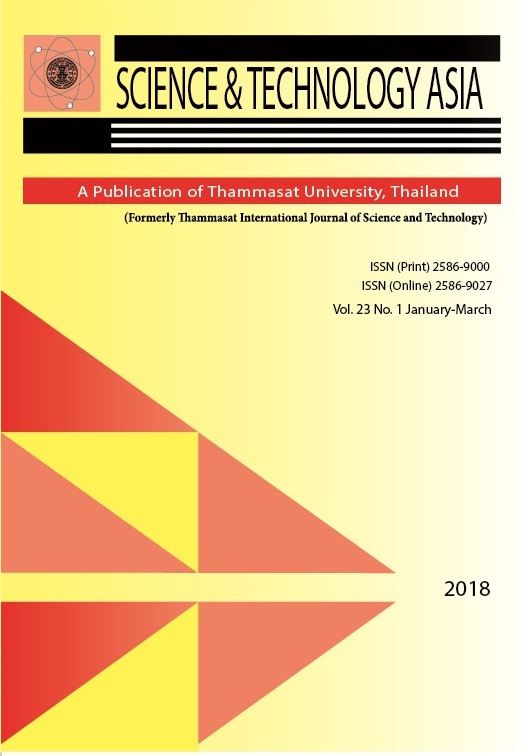Adsorption of Metal-Phthalocyanine Molecule on Aluminum (100) Surface: The DFT Study
Main Article Content
Abstract
Adsorption of various metal-phthalocyanine (MPc) molecules on Al(100) substrate were investigated by using the Density functional Theory (DFT). There are six transition metal atoms substituted in phthalocyanine skeleton ranking from d5 to d10 of the 1st row of transition metal and metal free phthalocyanine (H2Pc) molecule were studied. After adsorption, we found that the interaction between MPc molecules and substrate depended on the central metal of MPc molecule. The interaction between the ZnPc, CuPc and NiPc molecules on Al substrate are relatively weak comparing to the adsorption of H2Pc molecule, while the CoPc, FePc, and MnPc adsorptions show stronger interaction. This work are further investigated the vacuum level shift by extracting the information from the density of state (DOS) calculation. The shift of DOS of MPc molecule effect to the charge barriers at the interface.


